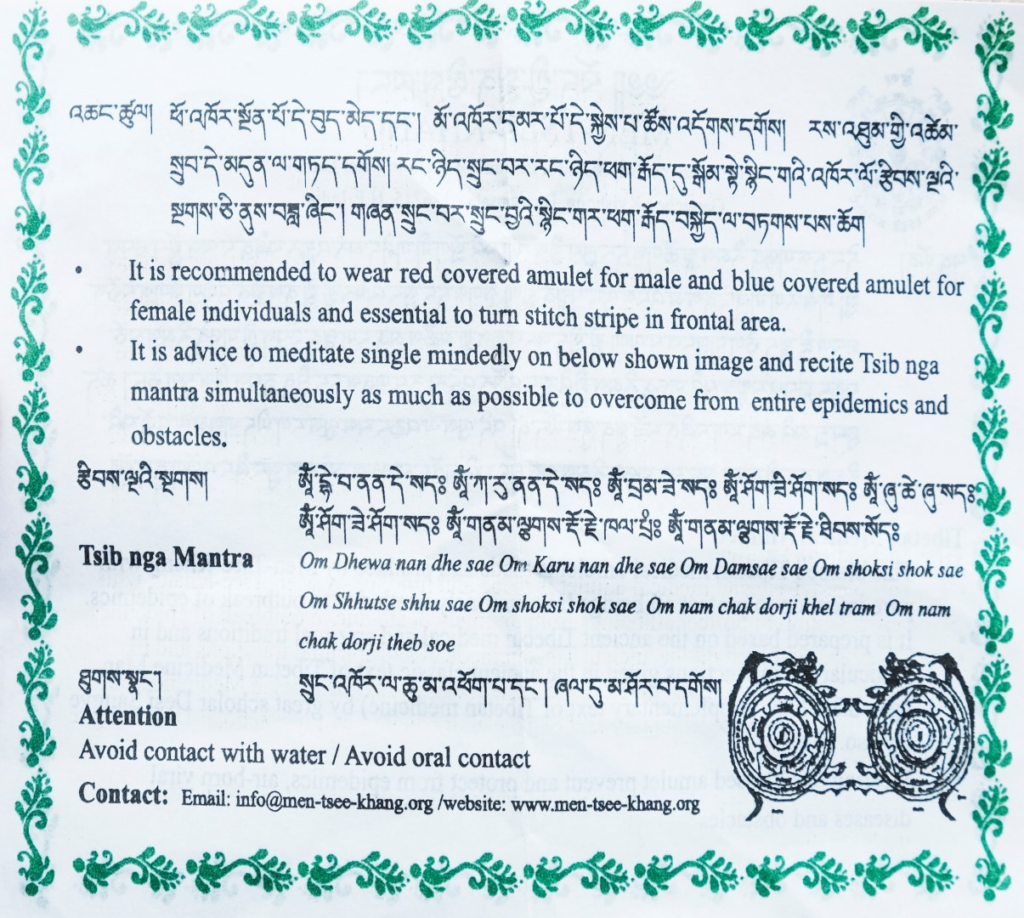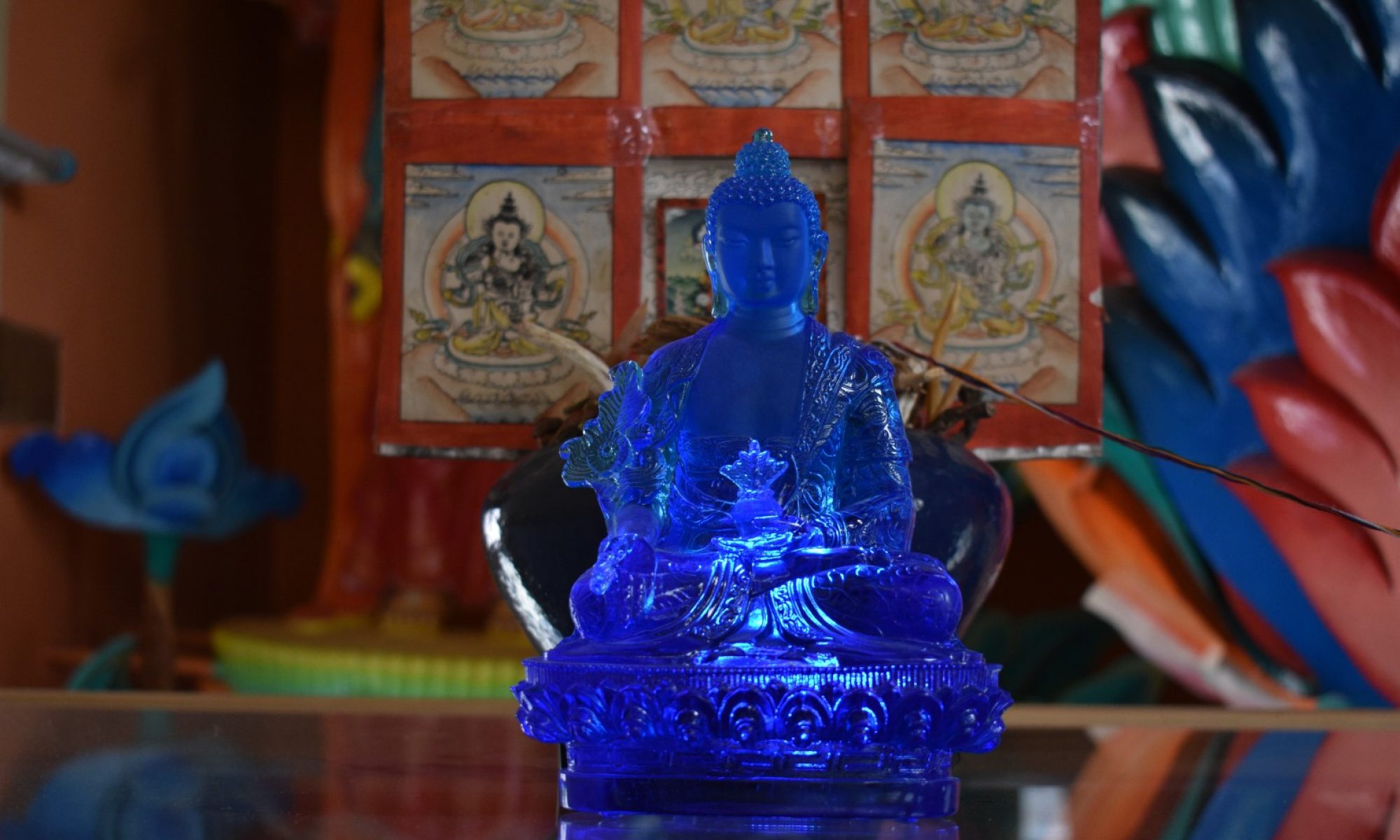In early February 2020, I (Barbara) went to Dharamsala, one of the centers of the Tibetan diaspora community in India and the seat of the Central Tibetan Administration. At that point only three official cases of COVID-19 had been confirmed in Kerala, South India. But the disease was on people’s minds. A friend gifted me two pills wrapped in black cloth and tightened with five-colored strings. In Tibetan, they are called rimsung rilbu (rims srung ril bu), meaning ‘pills that protect from contagion.’ Rimsung pills are based on a medicinal formula, but worn as an amulet. The next day, I observed a queue of Tibetans gathering before the Men-Tsee-Khang branch clinic in McLeod Ganj where by 10am, the entire stock of 2,500 rimsung pills was sold out.

The Men-Tsee-Khang also sold protective amulets that contain mantras, written on the printed image of a mandala surrounded by a wild boar. This is smeared with liquid substances that are attributed protective potency against infectious diseases, called rimné (rims nad). The amulet is tied in cloth with a five-colored string in a complex way by trained specialists.

The user should recite the mantra and visualize the image for protection, which is explained on a leaflet. These were also out of stock, but I was able to photograph one.


I was intrigued by these Tibetan medical preventive responses, asked questions on Tibetan ideas of contagion and protection from infectious diseases, and documented their early responses to the coronavirus pandemic before there were any cases in northern India. Field notes merged into a Think Piece, published in Medicine Anthropology Theory in April 2020.
